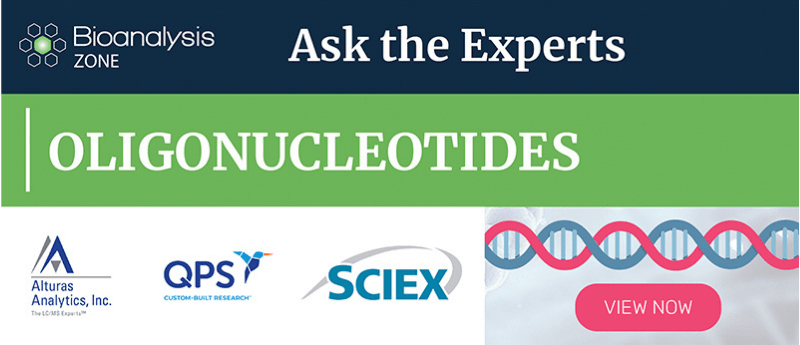2. What is more important when analyzing oligonucleotides, mass characterization or structural characterization?

 Chad Christianson (Alturas Analytics)
Chad Christianson (Alturas Analytics)
For the accurate quantitation of oligonucleotides from a biological matrix by LC–MS/MS, the mass characterization is definitely the most important aspect. If the mass of the oligonucleotide is not within a few daltons (assuming multiple charge states), the MS operating in multiple reaction monitoring (MRM) mode will not detect it.

Zamas Lam (QPS)
Traditionally, mass characterization has been more important as there are various options for structural characterization. Furthermore, there have been no real methods to understand the structure of minor metabolites or impurities. Moreover, the 3D structure of oligonucleotides are not easily assessable other than with x-ray crystallography. However, with the advances in software solution, new databases and newer mass spectrometry techniques such as ion mobility, charge distribution mass spectrometry and native mass spectrometry, the metabolism, 3D structure and stacking can now be evaluated.
 Ken Cook (Thermo Fisher Scientific)
Ken Cook (Thermo Fisher Scientific)
They are both extremely important. Accurate mass verification can be done with LC–HRMS which can also chromatographically separate some isobaric impurities. Co-eluting impurities with different masses can be seen and quantified by mass characterization. However, oligonucleotides are made up of only four bases and there are several possible isobaric impurities with identical mass that need further structural characterization for identification. Some isobaric variants will separate by chromatography and changes in the base sequence can be picked up by the new direct sequencing techniques.
 Alexey Wolfson (Advirna)
Alexey Wolfson (Advirna)
It is not possible to say what is more important – both methods are informative and required for QC.
The opinions expressed in this feature are those of the authors and do not necessarily reflect the views of Bioanalysis Zone or Future Science Group.

